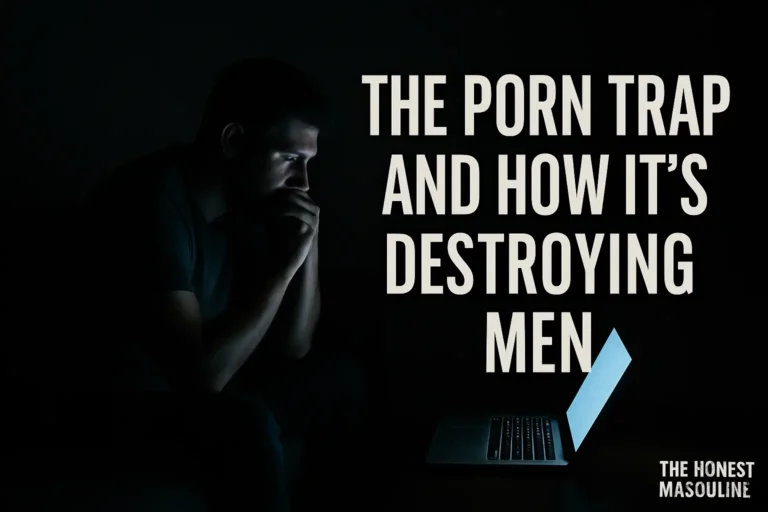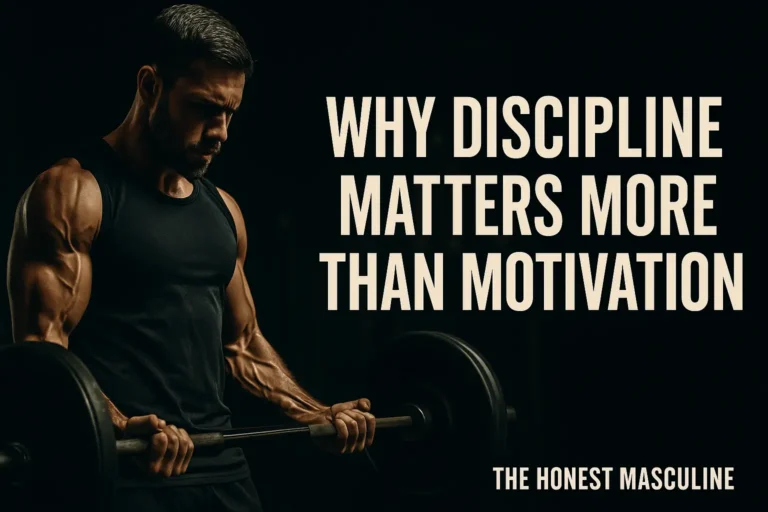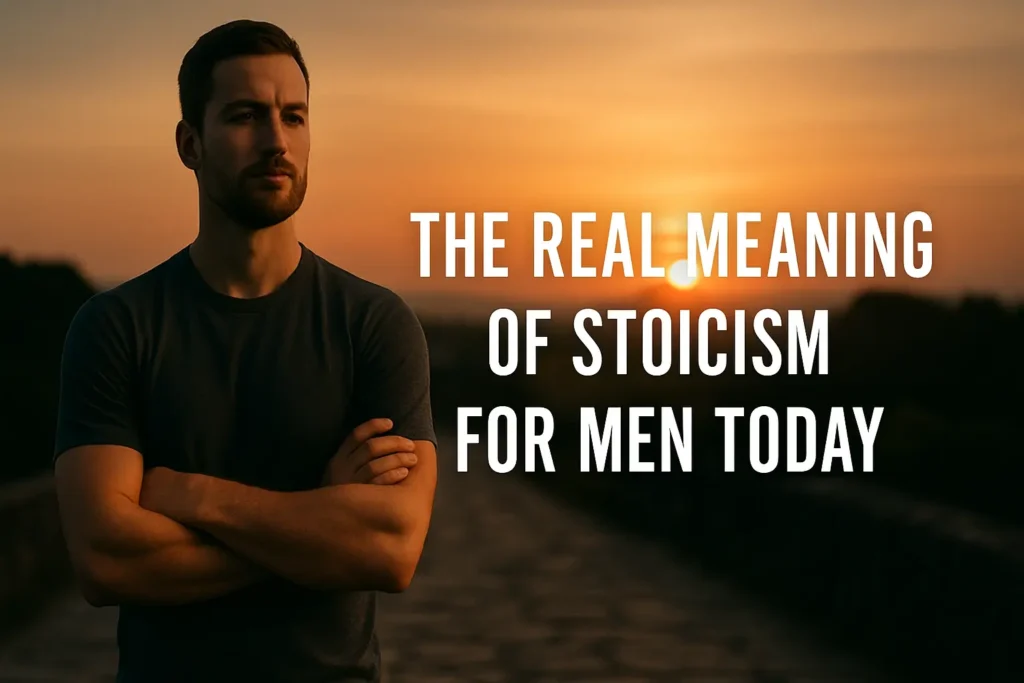
Table of Contents
Introduction
Most men hear the word Stoicism and think it means being a robot. No feelings. No expression. Just stone-faced silence until the day you die.
That’s not Stoicism. That’s emotional suppression. And it doesn’t make you strong — it makes you hollow.
Real Stoicism isn’t about killing your emotions. It’s about mastering them. It’s about learning to stay calm in chaos, disciplined in desire, and grounded in the face of loss. It’s the art of control — not denial.
Modern men desperately need this distinction. Because right now, too many are either exploding at every trigger or shutting down completely. Stoicism offers a third path: strength through composure.
The strongest man isn’t the one who feels nothing. It’s the one who feels deeply — and chooses how to respond.
The Pop-Culture Misinterpretation of Stoicism
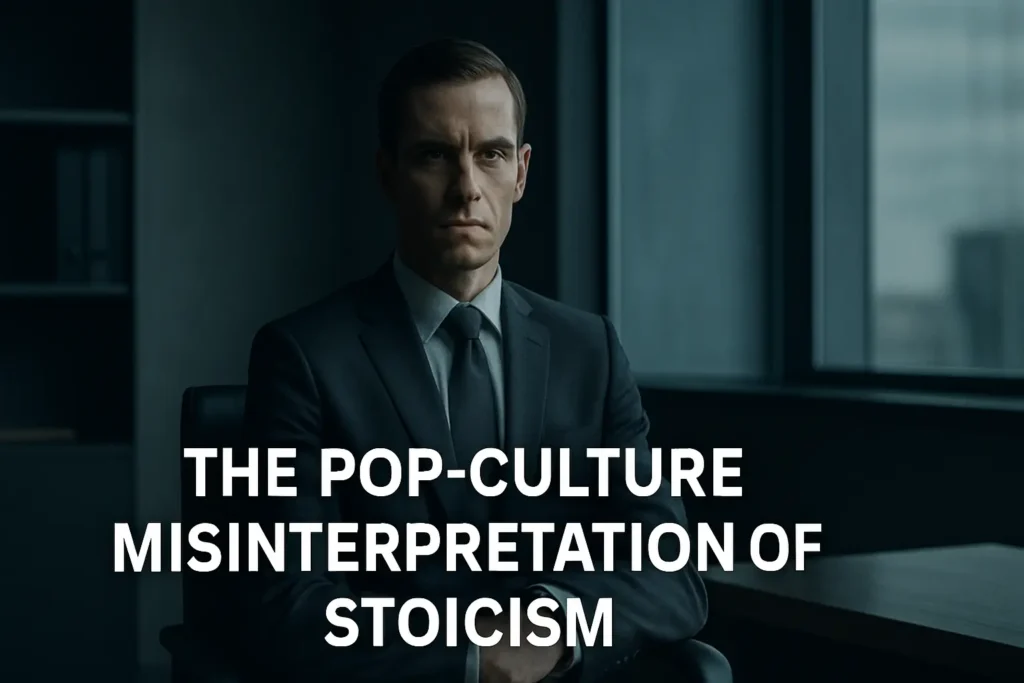
Scroll social media long enough and you’ll see the stereotype: Stoicism as the “alpha male” who never flinches, never feels, never breaks. Cold. Unreachable. A rock.
But here’s the problem — that’s not strength, that’s numbness. And numbness isn’t masculinity, it’s avoidance.
When men take Stoicism to mean “never show emotion,” they don’t become stronger. They become disconnected. They stop engaging with life. They confuse shutting down with being in control.
Real Stoics — Marcus Aurelius, Epictetus, Seneca — were anything but robots. They wrote about grief, pain, joy, anger, and love. They didn’t deny those feelings. They studied them. They practiced responding to them with reason, not impulse.
The modern misinterpretation of Stoicism leaves men colder, weaker, and more isolated. The original practice made men warmer, sharper, and unshakable.
What Stoicism Actually Teaches
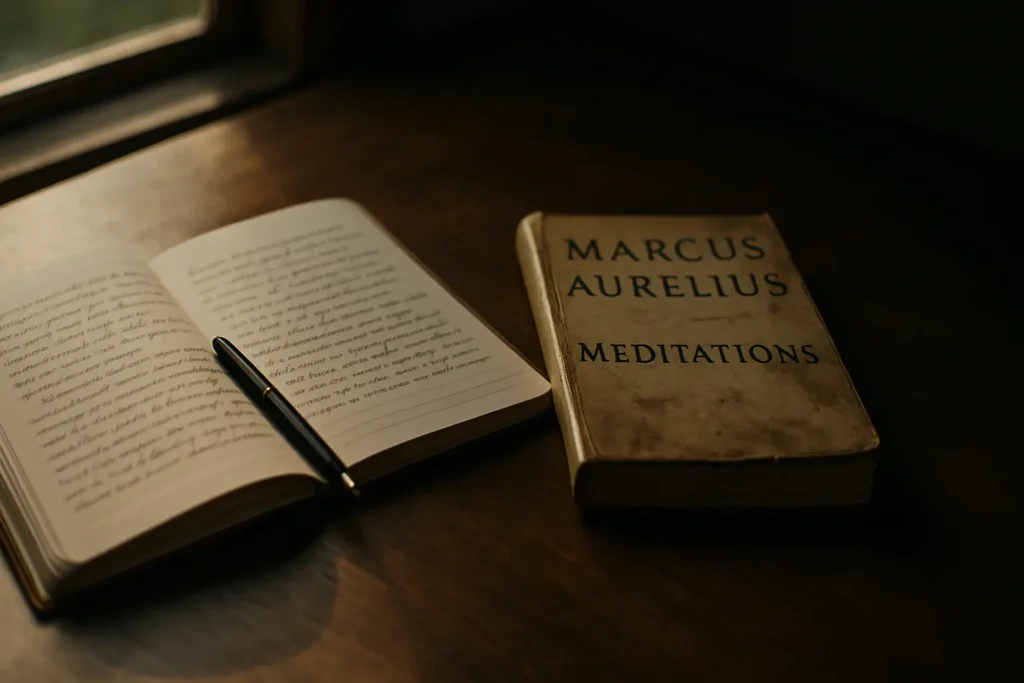
Stoicism wasn’t a philosophy for ivory towers — it was a manual for life. A system men could actually use to face hardship, temptation, and chaos.
At its core, Stoicism teaches three things every modern man needs:
1. Control What You Can, Accept What You Can’t
Most suffering comes from trying to control the uncontrollable — women’s choices, other people’s opinions, the past, the future. The Stoics drew a hard line: focus only on what’s within your power. Everything else? Let it go.
2. Virtue Is the Highest Good
For the Stoics, success wasn’t money, status, or even happiness. It was living with virtue — courage, justice, discipline, wisdom. Everything else could be stripped away, but virtue was unshakable.
3. Reason Over Impulse
Stoicism isn’t about ignoring emotion — it’s about not being ruled by it. Anger, lust, envy — all lose their grip when filtered through reason. The Stoic asks, “What’s the wise response here?” not “What do I feel like doing?”
Stoicism isn’t an escape from life. It’s a training ground for living it better.
Stoicism and Emotional Mastery

Most men think emotional mastery means feeling nothing. The Stoics knew better: mastery isn’t suppression, it’s control.
1. Anger
The Stoics saw anger as a fire that burns the man who carries it. Suppressing it doesn’t work — it just explodes later. The Stoic approach? Step back. Delay your reaction. Ask whether anger serves reason or just your ego. Nine times out of ten, it’s the latter.
2. Grief
Marcus Aurelius buried multiple children. Seneca wrote letters while dealing with exile and loss. They didn’t pretend grief didn’t exist. They acknowledged it fully — but refused to let it consume them. Grief was natural, but despair was optional.
3. Fear
Epictetus, born a slave, lived with constant vulnerability. Yet he taught that fear loses its grip once you accept death itself as natural. Fear shrinks when you stop running from it.
Emotional mastery isn’t about never feeling. It’s about never letting feelings make you a slave. The Stoic man feels everything — but chooses his response every time.
Stoicism vs. Modern Masculinity

If there’s ever been a time men need Stoicism, it’s now.
We live in a world engineered for distraction and outrage. Every scroll, every headline, every app is designed to hijack your attention and trigger your emotions. Men are told to react instantly — to get angry, to feel offended, to chase every impulse.
That’s why so many men are lost. They’re slaves to their environment. They confuse instant reaction with strength, when it’s actually weakness.
Stoicism flips that script. It demands restraint. It demands composure. It demands a standard higher than feelings: virtue.
The Antidote to Victimhood
Modern culture pushes men toward victimhood. Every setback becomes someone else’s fault. Every rejection is a crisis. Every failure is injustice. But the Stoic man refuses that frame. He owns his response — always.
Strength as Calm Direction
True masculinity today isn’t about outbursts or dominance displays. It’s about calm direction. A man who can’t be rattled by politics, women, money, or chaos is a man who others instinctively trust to lead.
Modern masculinity without Stoicism is fragile. Masculinity with Stoicism is unbreakable.
Practical Stoic Habits for Men
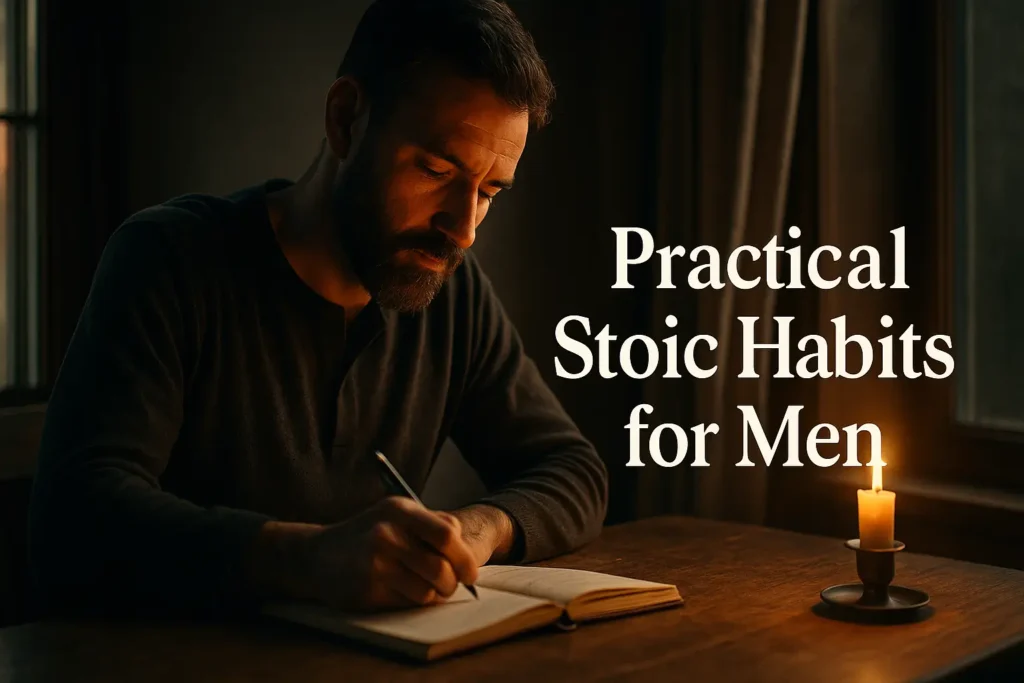
Stoicism isn’t just theory — it’s practice. The ancient Stoics weren’t philosophers in libraries; they were men in the trenches of life. Their tools are as relevant now as they were 2,000 years ago.
1. Journaling Daily
Marcus Aurelius’ Meditations wasn’t written for us — it was his personal journal. A nightly dialogue with himself. Journaling forces you to slow down, confront your thoughts, and align your actions with your values.
2. Negative Visualization
The Stoics practiced imagining loss before it happened. Not to be pessimistic — but to prepare. Visualize failure, rejection, even death. When you rehearse hardship, you stop fearing it. You face life sharper, calmer, and more grateful.
3. Voluntary Discomfort
Seneca slept on the floor some nights to remind himself he could handle discomfort. Modern men can do the same: cold showers, fasting, hard training. When you practice hardship, luxury loses its hold on you.
4. Morning and Evening Reflections
Start your day with intention: What virtues will I live by today? End it with accountability: Did I live up to them? These small rituals anchor you in discipline.
Stoicism isn’t learned by reading quotes. It’s forged through habits that harden the mind and discipline the body.
Brotherhood & Stoicism

Stoicism gets painted as a lone-wolf philosophy — the image of a man silently enduring life’s storms on his own. But the truth is, the Stoics weren’t isolated. They had schools, communities, and mentors.
Marcus Aurelius had his generals and philosophers. Epictetus had students. Seneca wrote letters to friends. Stoicism thrived in brotherhood.
1. Why Brotherhood Matters
Practicing Stoicism alone is hard. Your emotions feel bigger when you’ve got no one to check you. A brother who looks you in the eye and says, “You’re stronger than this. Hold the line.” can pull you out of the spiral faster than any quote.
2. Brotherhood Sharpens Virtue
Discipline, courage, and wisdom grow sharper when tested against other men. Brotherhood gives feedback. It calls out weakness. It pushes you back toward the path when you stray.
3. Stoicism as Shared Practice
The Stoics debated, trained, and held each other accountable. Modern men can do the same. Sharing struggles, reflecting together, and keeping each other aligned with virtue makes Stoicism real, not just theoretical.
Stoicism isn’t a solitary prison. It’s a shared discipline. Brotherhood keeps it alive.
Conclusion
Stoicism isn’t about being a robot. It isn’t about suppressing emotion or pretending you don’t feel pain. That’s not strength — that’s denial.
Real Stoicism is about mastery. It’s about feeling everything fully, but refusing to be ruled by any of it. Anger doesn’t own you. Fear doesn’t paralyze you. Grief doesn’t break you. You choose your response. Every time.
In a world that thrives on outrage and distraction, Stoicism is the edge men need. It anchors you in virtue. It makes you unshakable when everyone else is reactive. It gives you composure, clarity, and power.
The Stoic man isn’t cold. He’s calm. He’s steady. He’s a leader when the world is in chaos.
Because the truth is this: the modern man who practices Stoicism doesn’t feel less. He simply refuses to be broken by what he feels.
👉Want to reclaim your life?
Join My Newsletter The Honest Masculine weekly newsletter — and you’ll get instant access to my (The Masculine Comeback: A 7-Day Reset for Men Who Feel Lost). No fluff, no filters. Just raw truths about breakups, masculinity, fatherhood, and the quiet battles men face alone.
It’s for the man who’s done pretending.

If you like my content? Let me know by Buying me a coffee. Thanks 🙂


